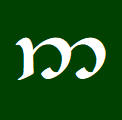3.649 Bird (other) ᴹQ. ambale n. “yellow bird, yellow hammer” A word for a yellow bird in The Etymologies of the 1930s, apparently the species yellowhammer, derived from ᴹ✶asmalē as an elaboration of the root ᴹ√SMAL “yellow” (Ety/SMAL). Tolkien later changed this root to √MAL, but ammale might still be
Paul Strack
Select Elvish Words 3.647-3.648: Gull, Petrel, Swan
3.647 Gull, Petrel Q. maiwë n. “gull” A noun for “gull” appearing in its plural form maiwi in the Q. Markirya poem of the 1960s (MC/222). In the The Etymologies of the 1930s, ᴹQ. maiwe “gull” was derived from the root ᴹ√MIW “whine” (Ety/MIW). Conceptual Development: In the Qenya Lexicon
Select Elvish Words 3.641-3.642: Eagle, Hawk, Crow
3.641 Eagle, Hawk ᴹQ. fion (fiond-) n. “hawk, ⚠️haste” A word in The Etymologies of the 1930s derived from the root ᴹ√PHI and the basis for the name ᴹQ. Fionwe (Ety/PHI). As described by Christopher Tolkien, the gloss of this word is unclear and might be “haste” or “hawk” (LR/381),
Select Elvish Words 3.64: Bird
3.64 Bird Q. aiwë n. “(small) bird” A noun meaning “(small) bird” (SA/lin¹, Ety/AIWĒ), appearing in Radagast’s Quenya name Aiwendil “Lover of Birds” (UT/401). It was derived from primitive ᴹ✶aiwē like its Sindarin cognate aew (Ety/AIWĒ). Conceptual Development: In the Gnomish Lexicon from the 1910s, ᴱQ. aiwe appeared as the
Select Elvish Words 3.62-3.63: Cat, Mouse, Rodent
3.62 Cat ᴹQ. miue (miuy-) n. “cat” A word for “cat” in the Declension of Nouns from the early 1930s, from primitive {mauı̯ǝ >>} miuı̯ǝ (PE21/12-13), and so probably related to the root ᴹ√MIW “whine” from The Etymologies which had the derivative ᴹQ. miule “whining, mewing” (Ety/MIW). The stem form
Select Elvish Words 3.61-3.612: Dog, Puppy
3.61 Dog ⚠️Q. hú n. “hound (or ?heart)” A Quenya word appearing in rough notes on Words, Phrases and Passages from The Lord of the Rings from the late 1950s or early 1960s exploring the possible origins of S. huorn (PE17/86). The gloss “hound” is uncertain and could be “heart”
Select Elvish Words 3.51-3.57: Chicken, Goose, Duck
3.51 Chicken ᴱQ. kekteket (kektekett-) n. “clucking” The word ᴱQ. kekteket “clucking” appeared in the Qenya Lexicon of the 1910s under the early root ᴱ√KEKE “cluck” (QL/46). In the margin Tolkien wrote cectecet, an early example of him using c in spelling for the sound [k]. Neo-Quenya: For purposes of
Select Elvish Words 3.41, 3.44: Horse, Mare
3.41 Horse ⚠️ᴹQ. olombo n. “horse” A word for horse in The Etymologies of the 1930s, derived from the root ᴹ√LOP (EtyAC/LOP). This root did not appear in The Etymologies as published in The Lost Road, but Carl Hostetter and Patrick Wynne reported it in their Addenda and Corrigenda to
Select Elvish Words 3.32: Boar, Pig, Goat
3.32 Boar ᴱQ. karkapolka n. “boar, *(lit.) tusk-pig” The word ᴱQ. karkapolka “boar” appeared in the Qenya Lexicon of the 1910s as a combination of ᴱQ. karka “fang, tooth, tusk” and ᴱQ. polka “pig” (QL/48), hence literally “*tusk pig”. Conceptual Development: The word for “boar” in the Early Qenya Word-lists
Select Elvish Words 3.25-3.29: Sheep, Ram, Lamb
3.25 Sheep Q. máma n. “sheep” A word for “sheep” appearing in the Quendi and Eldar essay of 1959-60 as a derivative of ✶māmā (WJ/395). It appeared again in notes from 1968 as a derivative of ✶mbāba (VT47/35), apparently with some amount of assimilation since the second primitive b >




